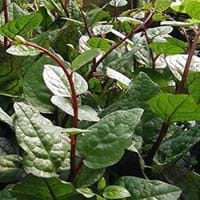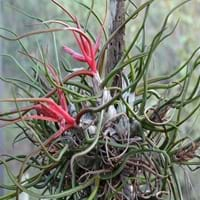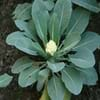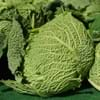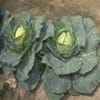Life Span
Perennial
Perennial
Origin
Southeastern Asia, India
Southeastern United States, Latin America and the Caribbean, Central America, South America
Types
Basella rubra, L.Basella oleracea, Landw.Basella lucida, L.Basella japonica, Burm.f.Basella cordifolia,
Not Available
Number of Varieties
Not Available
Habitat
gardens
Humid climates
USDA Hardiness Zone
Not Available
10-15
Sunset Zone
H1, H2, 3a, 3b, 4, 5, 6, 7, 8, 9, 10, 11, 12, 13, 14, 15, 16, 17, 18, 19, 20, 21, 22, 23, 24
H1, H2, 23, 24
Habit
Vining/Climbing
Rosette/Stemless
Minimum Width
Not Available
Flower Color
White, Pink, Light Pink
Purple
Flower Color Modifier
Bicolor
Not Available
Fruit Color
Purple, Black
Non Fruiting Plant
Leaf Color in Spring
Green, Light Green
Green, Gray Green, Pink
Leaf Color in Summer
Green, Dark Green
Green, Gray Green, Dark Green
Leaf Color in Fall
Green, Dark Green
Green, Gray Green, Dark Green
Leaf Color in Winter
Green, Dark Green
Gray Green, Dark Green, Rose
Leaf Shape
Round
Needle like
Plant Season
Spring, Summer, Fall, Winter
Spring, Summer, Fall, Winter
Sunlight
Full Sun, Partial Sun
Partial Sun, Partial shade
Type of Soil
Clay, Loam
Not Available
The pH of Soil
Neutral
Not Available
Soil Drainage
Well drained
Not Available
Bloom Time
Indeterminate
Spring, Late Spring
Tolerances
Drought
Not Available
Where to Plant?
Ground, Pot
Container, Ground, Pot
How to Plant?
Seedlings
Divison
Plant Maintenance
Medium
Medium
Watering Requirements
Keep ground moist, Requires watering in the growing season, Water Deeply, Water less during winter
Needs small amount of water, Needs Very high moisture
In Summer
Lots of watering
Lots of watering
In Spring
Moderate
Moderate
In Winter
Average Water
Average Water
Soil pH
Neutral
Not Available
Soil Type
Clay, Loam
Not Available
Soil Drainage Capacity
Well drained
Not Available
Sun Exposure
Full Sun, Partial Sun
Partial Sun, Partial shade
Pruning
Remove dead leaves, Remove dead or diseased plant parts, Requires very little pruning
Remove damaged leaves, Remove dead branches, Remove dead leaves, Remove dead or diseased plant parts
Fertilizers
All-Purpose Liquid Fertilizer
All-Purpose Liquid Fertilizer
Pests and Diseases
Insects, Mites
Pests and diseases free, Red blotch
Plant Tolerance
Drought
Drought, Heat And Humidity, Wet Site
Flower Petal Number
Single
Single
Edible Fruit
Not Available
No
Foliage Texture
Medium
Fine
Foliage Sheen
Glossy
Glossy
Attracts
Not Available
Hummingbirds
Allergy
no allergic reactions
Not Available
Aesthetic Uses
Not Used For Aesthetic Purpose
Not Used For Aesthetic Purpose
Beauty Benefits
Not Available
Not Available
Environmental Uses
Air purification
Air purification
Medicinal Uses
Astringent
Not Available
Part of Plant Used
Fruits, Leaves
Not Available
Other Uses
Culinary use, Used As Food
Not Available
Used As Indoor Plant
No
Yes
Used As Outdoor Plant
Yes
Yes
Garden Design
Container, Edible, Groundcover, Herb / Vegetable, Tropical, Vine
Hanging Basket, Tropical
Botanical Name
BASELLA alba
TILLANDSIA bulbosa
Common Name
Ceylon Spinach, Indian Spinach, Malabar Spinach
Bulbous Air Plant, Dancing Bulb
In Hindi
भारतीय पालक
Dancing Bulb
In German
Indian Spinat
Dancing Bulb
In French
épinards indienne
Dancing Bulb
In Spanish
espinaca india
Dancing Bulb
In Greek
Ινδικό Σπανάκι
Dancing Bulb
In Portuguese
espinafre indiano
Dancing Bulb
In Polish
Indyjski szpinak
Dancing Bulb
In Latin
Spinach Indian
Dancing Bulb
Phylum
Not Available
Tracheophyta
Class
Not Available
Magnoliopsida
Order
Caryophyllales
Poales
Family
Basellaceae
Bromeliaceae
Clade
Angiosperms, Core eudicots, Eudicots
Angiosperms, Commelinids, Monocots
Tribe
Not Available
Not Available
Subfamily
Not Available
Tillandsioideae.
Importance of Indian Spinach and Dancing Bulb
Want to have the most appropriate plant for your garden? You might want to know the importance of Indian Spinach and Dancing Bulb. Basically, these two plants vary in many aspects. Compare Indian Spinach and Dancing Bulb as they differ in many characteristics such as their life, care, benefits, facts, etc. Every gardener must at least have the slightest clue about the plants he wants to plant in his garden. Compare their benefits, which differ in many ways like facts and uses. The medicinal use of Indian Spinach is Astringent whereas of Dancing Bulb is Not Available. Indian Spinach has beauty benefits as follows: Not Available while Dancing Bulb has beauty benefits as follows: Not Available.
Compare Facts of Indian Spinach vs Dancing Bulb
How to choose the best garden plant for your garden depending upon its facts? Here garden plant comparison will help you to solve this query. Compare the facts of Indian Spinach vs Dancing Bulb and know which one to choose. As garden plants have benefits and other uses, allergy is also a major drawback of plants for some people. Allergic reactions of Indian Spinach are no allergic reactions whereas of Dancing Bulb have Not Available respectively. Having a fruit bearing plant in your garden can be a plus point of your garden. Indian Spinach has showy fruits and Dancing Bulb has no showy fruits. Also Indian Spinach is not flowering and Dancing Bulb is not flowering . You can compare Indian Spinach and Dancing Bulb facts and facts of other plants too.
